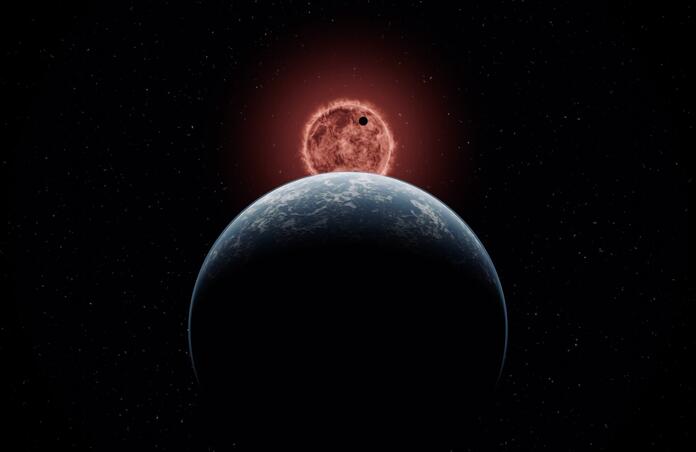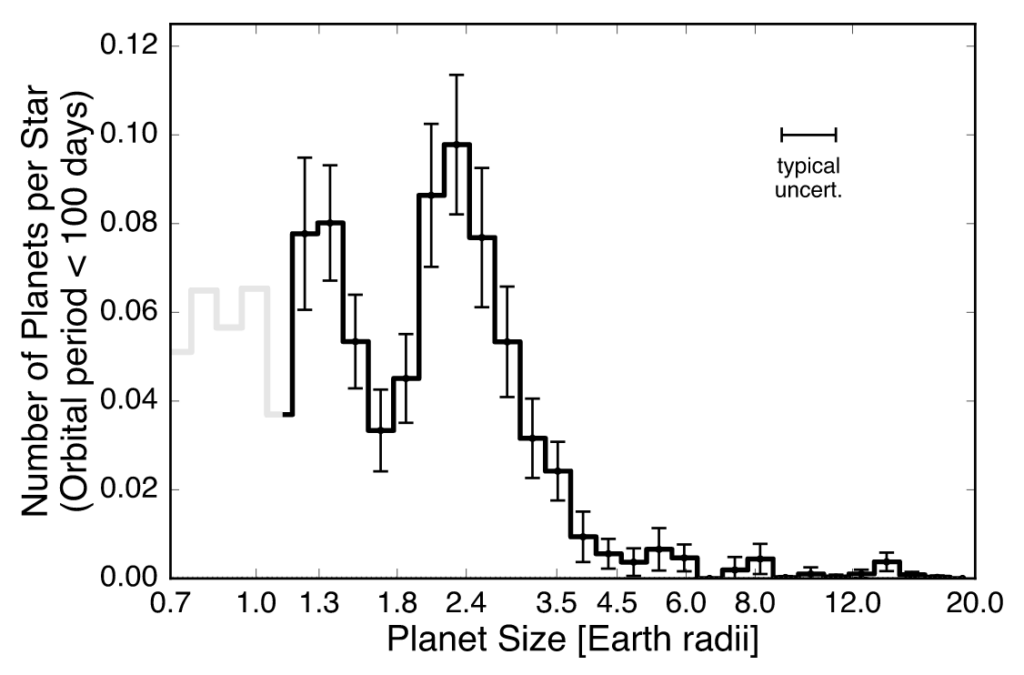Study finds system of exoplanets within the radius valley

The radius valley is a well-known dip in the number of exoplanets with sizes between ‘super-Earth’ and ‘sub-Neptune’ types. However, a group of researchers from the University of Liege and CSIC have detected an exoplanetary system comprising two planets of sizes within this gap, making them extremely useful for further study.
The system called TOI-2096 is located 150 light years from Earth, with two planets circling a type M dwarf star in slightly eccentric orbits. The team used data from TESS to reveal the presence of the planets, which uses the transit method. This involves looking for a temporary dip in the brightness of a star which indicates the passing of a planet. “TESS is conducting an all-sky survey using the transit method, that is, monitoring the stellar brightness of thousands of stars in the search for a slight dimming, which could be caused by a planet passing between the star and the observer. However, despite its power to detect new worlds, the TESS mission needs support from ground-based telescopes to confirm the planetary nature of the detected signals," explains Francisco J. Pozuelos, astrophysicist, first author of the paper, and former member of the ExoTIC laboratory at the Univeristy of Liège.
With the help of ground-based telescopes TRAPPIST and SPECULOOS, the transits of TOI-2096 b and c were observed. These planets were found to be in resonant orbits, a phenomenon that occurs when two bodies have orbital periods which are an integer ratio of each other. "Making an exhaustive analysis of the data, we found that the two planets were in resonant orbits: for each orbit of the outer planet, the inner planet orbits the star twice," explains Mathilde Timmermans, a doctoral student at the ExoTIC lab at the University of Liège and second author of the study.
Due to this resonance, the periods are also multiples of each other, with a period of 3.12 days for planet b and 6.38 days for planet c. “This is a very particular configuration, and it causes a strong gravitational interaction between the planets,” says Timmermans. “This interaction delays or accelerates the passage of the planets in front of their star and could lead to the measurement of the planetary masses using larger telescopes in the near future.”

What makes these planets particularly interesting is their sizes. The inner planet has a radius just 1.2 times that of Earth, which puts it in the group of ‘super-Earths”. These planets have similar properties to Earth with rocky compositions and are potentially surrounded by a thin atmosphere. The outer planet is slightly larger, with a radius of 1.9 Earth radii. This is just over half that of Neptune, putting it in the “mini-Neptune” category. These are planets comprised of rocky or icy cores, with an extended hydrogen or water-rich atmosphere similar to the icy giants of our solar system. Both of these planets fall within the “radius valley”, which is the lack of planets detected with sizes between 1.5 and 2.5 Earth radii.
"These planets are of crucial importance given their sizes," notes Mathilde Timmermans, "the formation of super-Earths and mini-Neptunes remains a mystery today. There are several formation models trying to explain it, but none fits the observations perfectly. TOI-2096 is the only system found to date that has a super-Earth and a mini-Neptune precisely at the sizes where the models contradict each other. In other words, TOI-2096 may be the system we've been looking for to understand how these planetary systems have formed."
"Thanks to the relative sizes of the planets with respect to the host star, as well as the brightness of the star, we find that this system is one of the best candidates for a detailed study of their atmosphere with the JWST space telescope. We hope to be able to do this quickly by coordinating with other universities and research centers. These studies will help confirm the presence of an atmosphere, extensive or not, around planets b and c and thus give us clues as to their formation mechanism."
--
Cover image: Lionel J. Garcia / ULiège
Journal source: F.J. Pozuelos, et al. A super-Earth and a mini-Neptune near the 2:1 MMR straddling the radius valley around the nearby mid-M dwarf TOI-2096, Astronomy & Astrophysics, https://doi.org/10.1051/0004-6361/202245440
